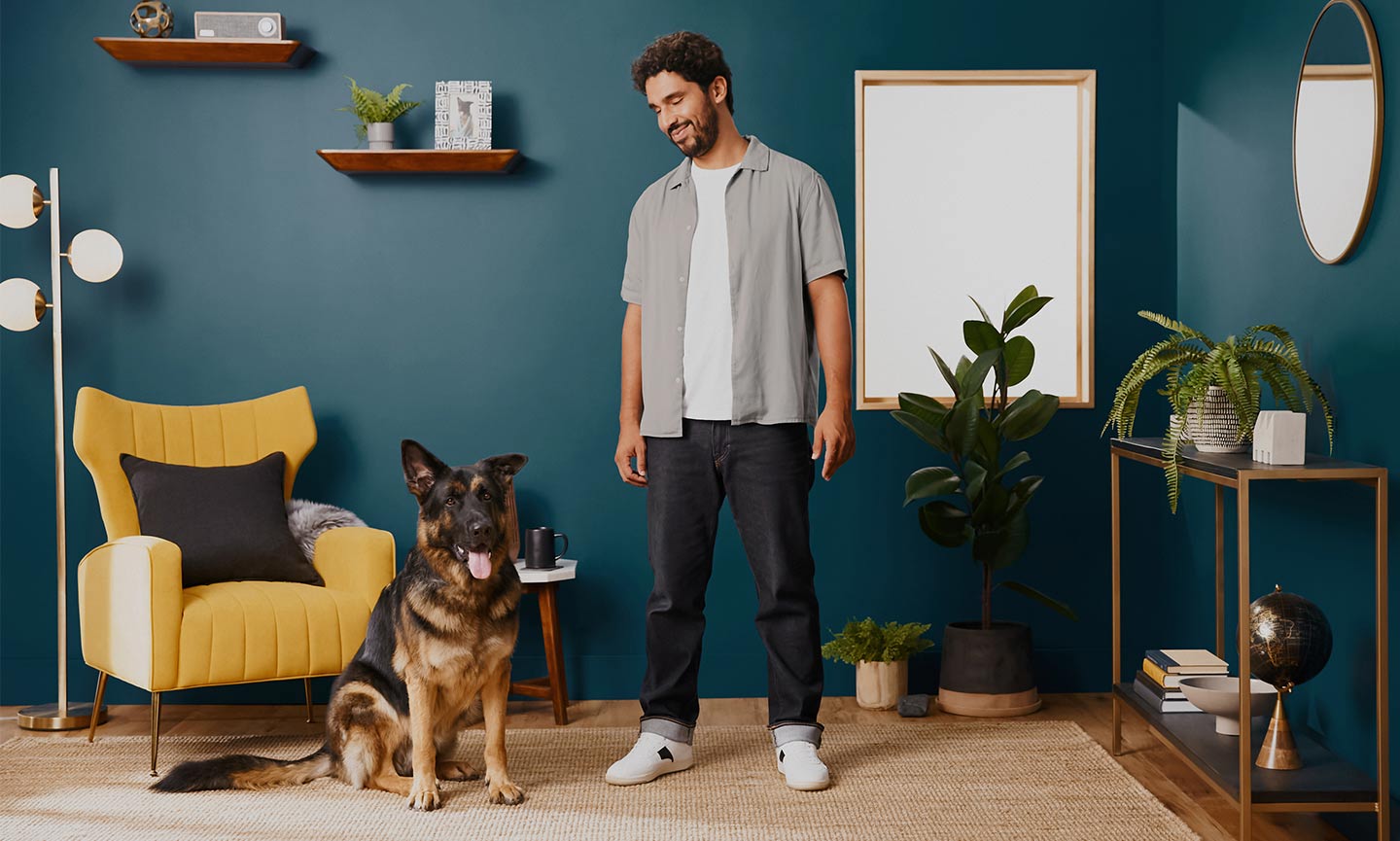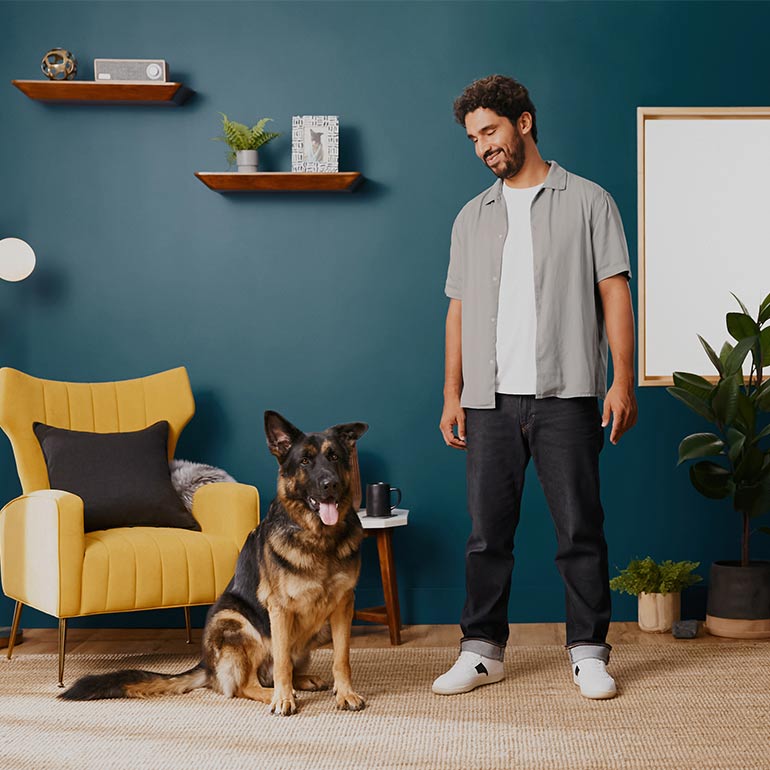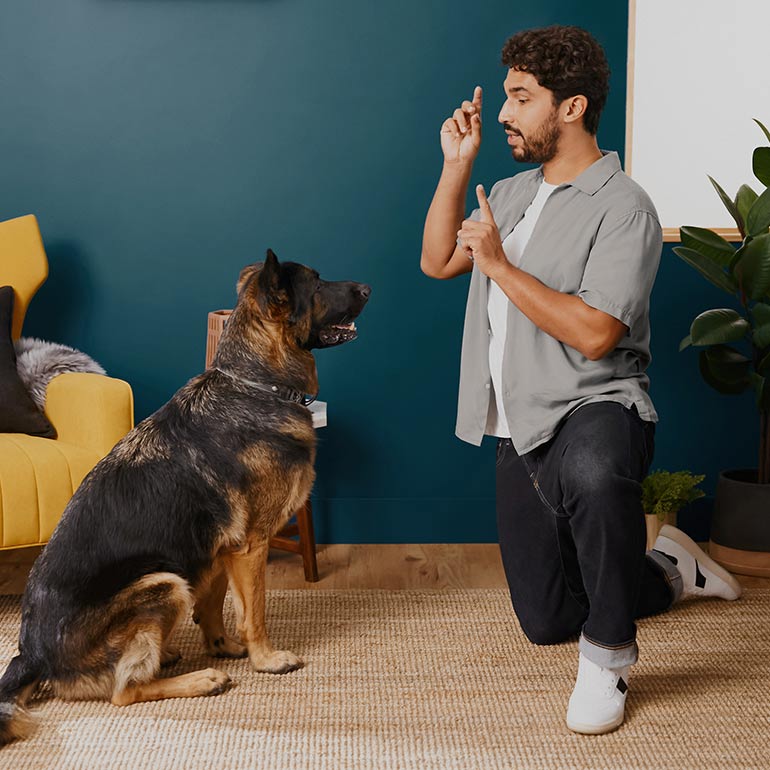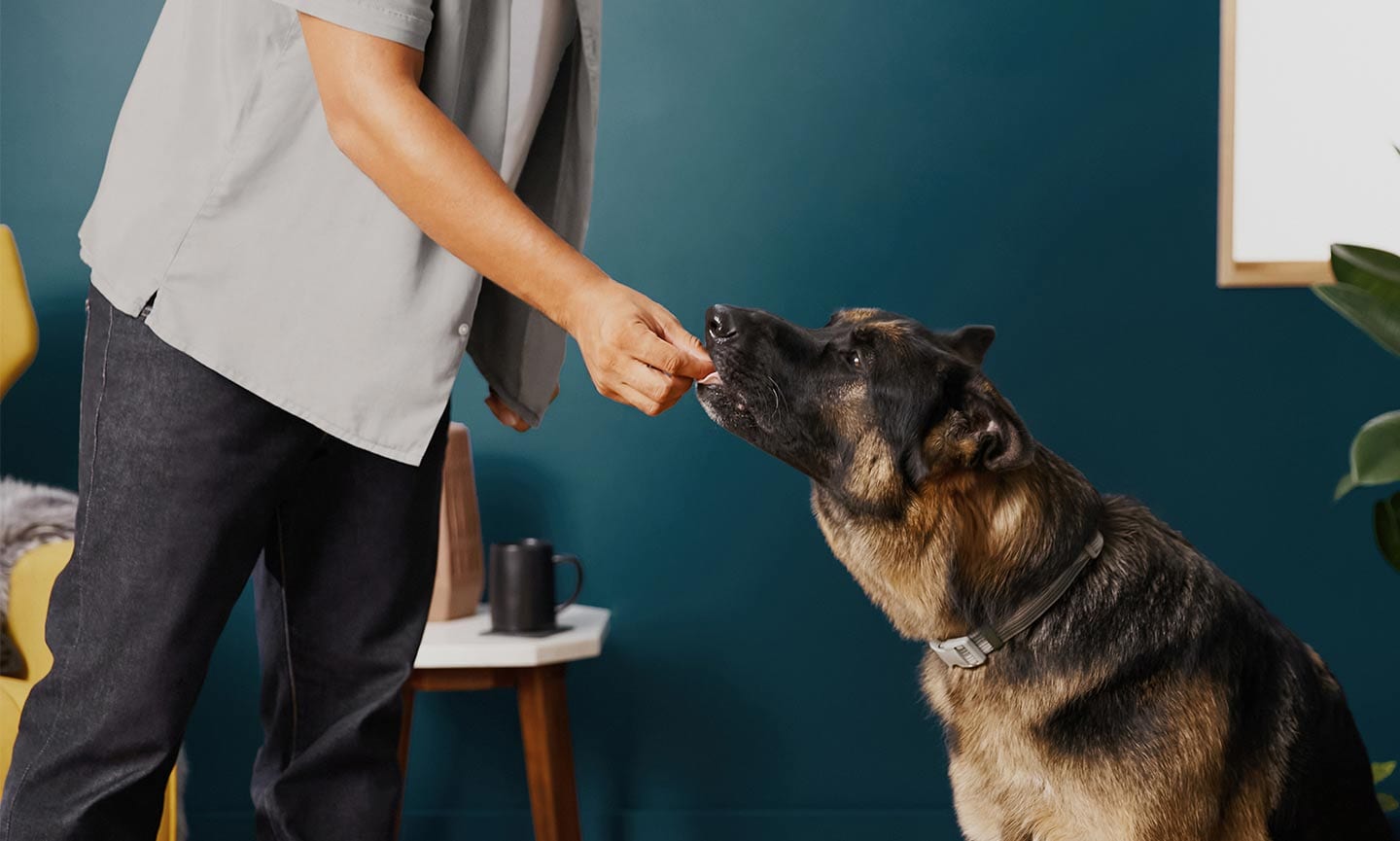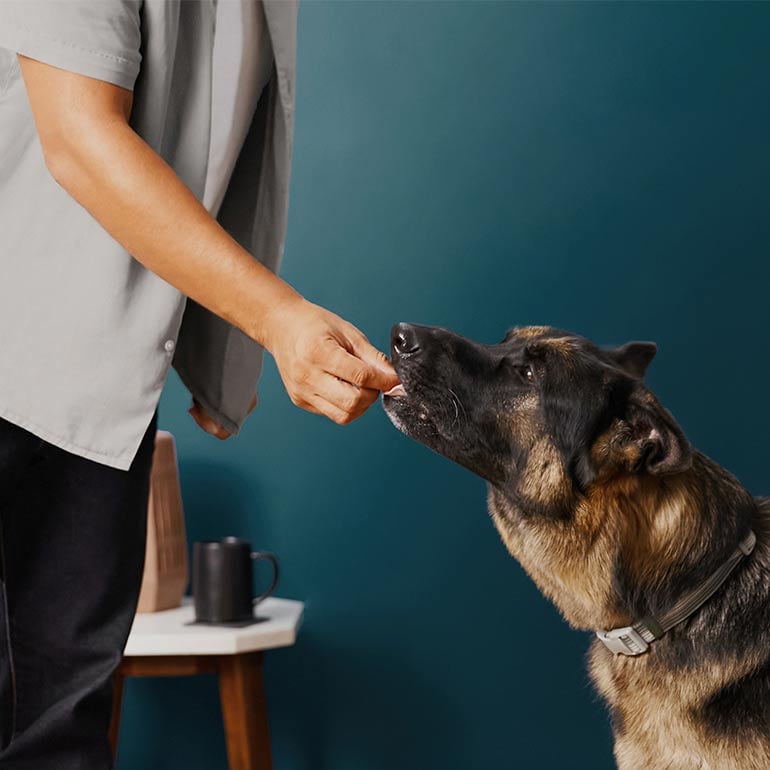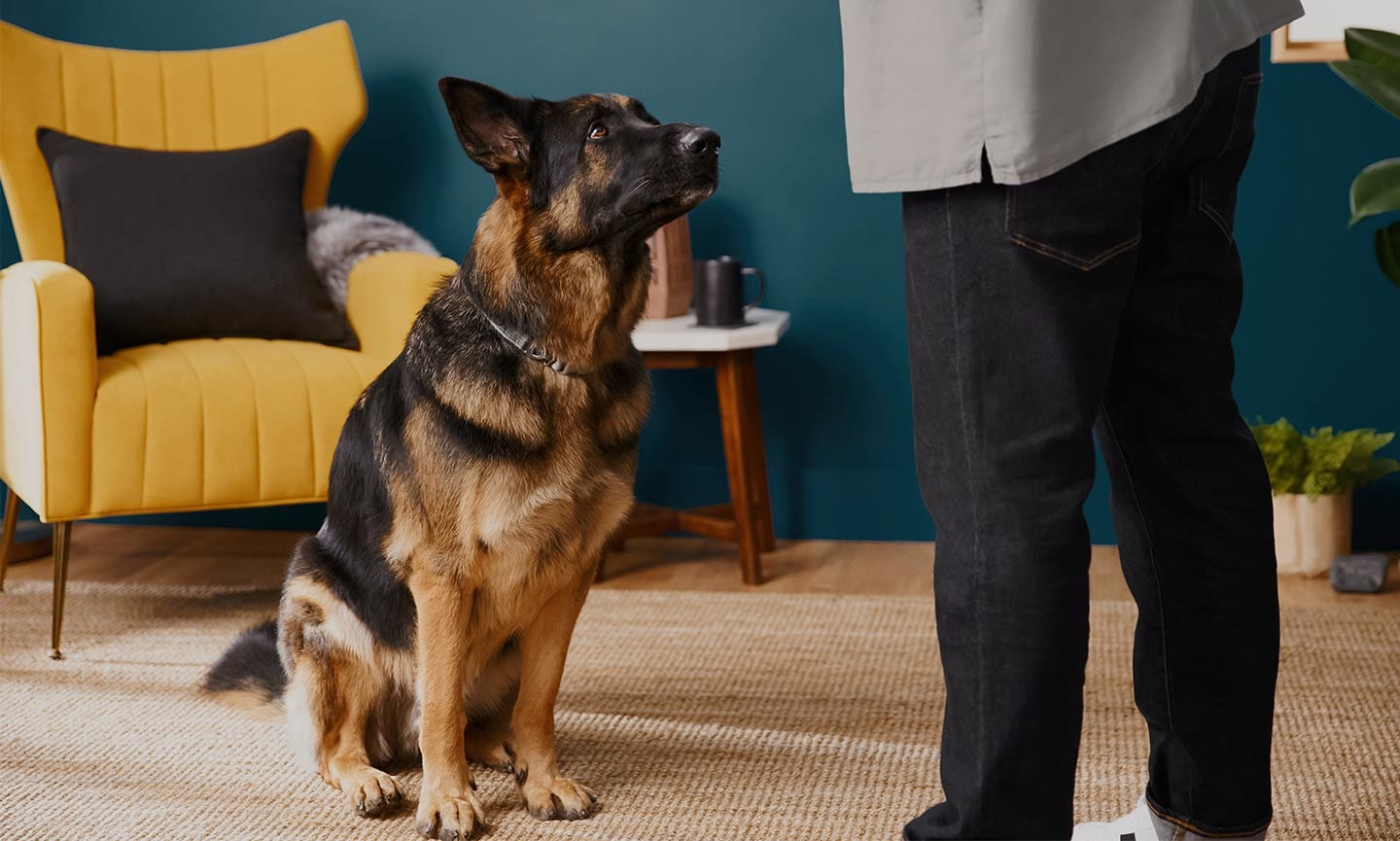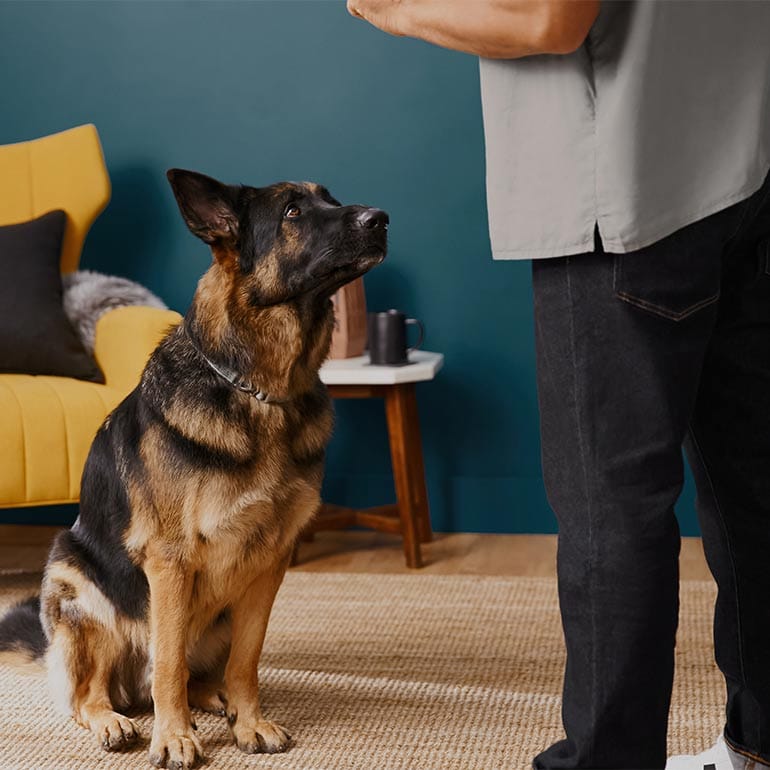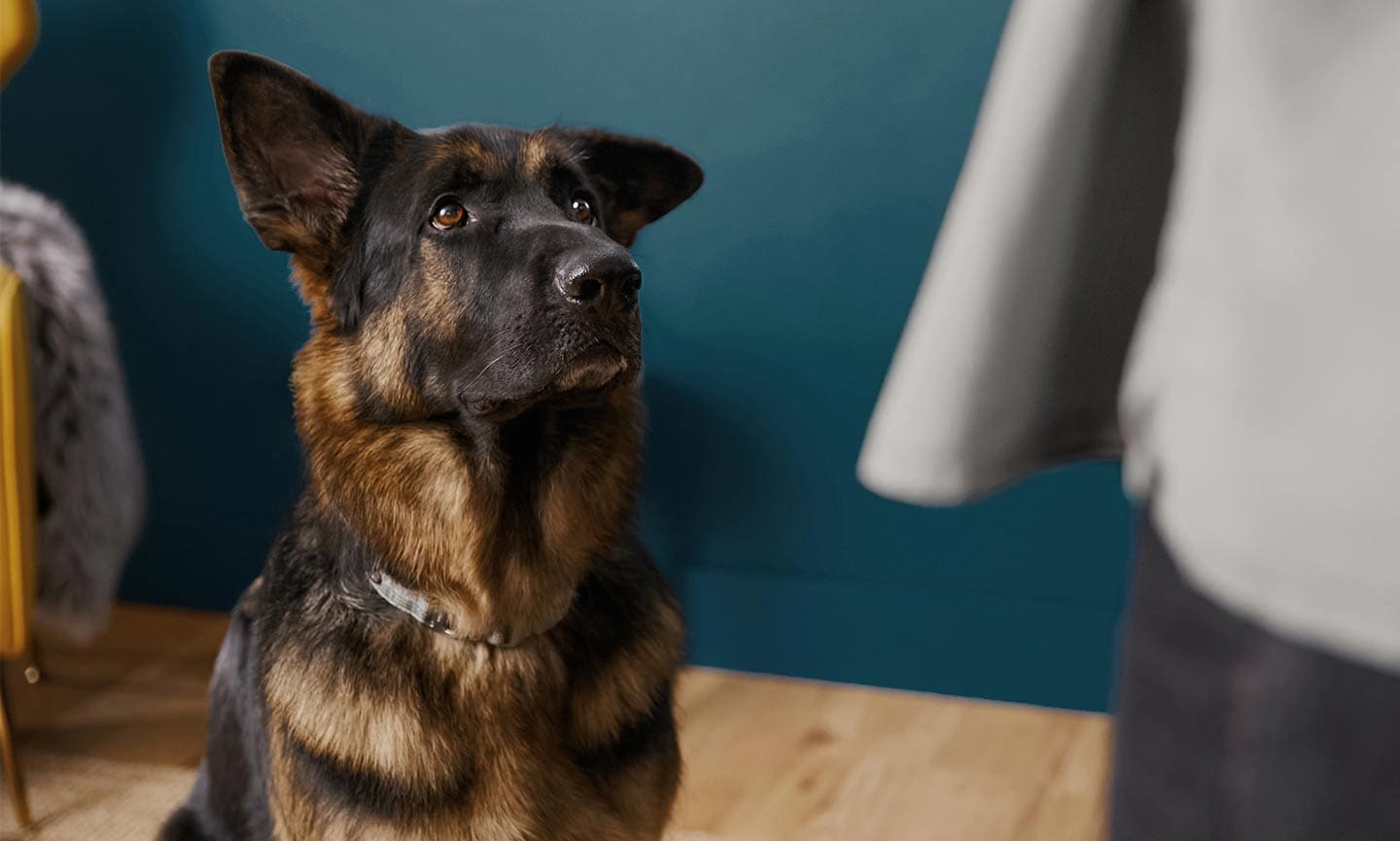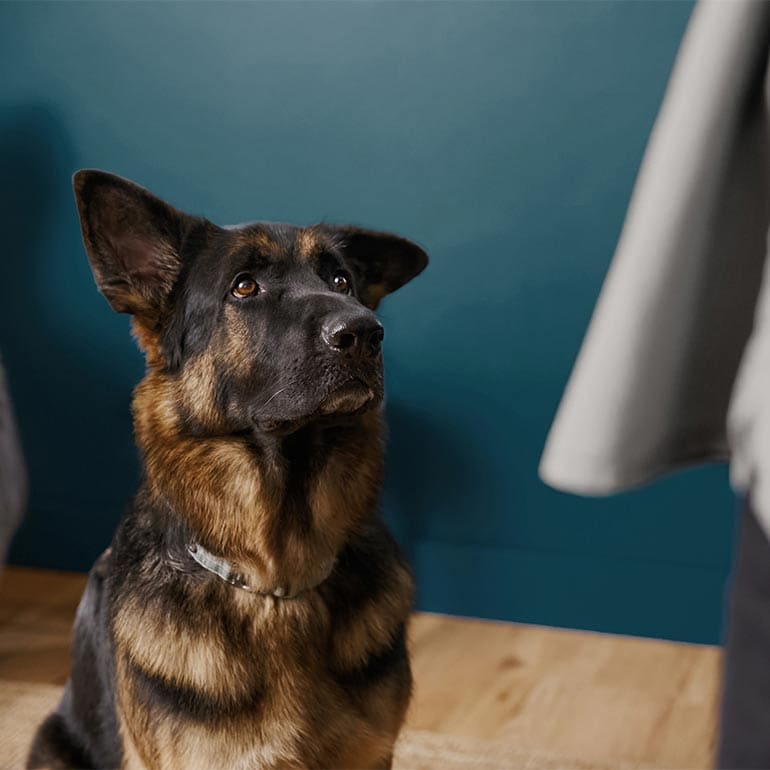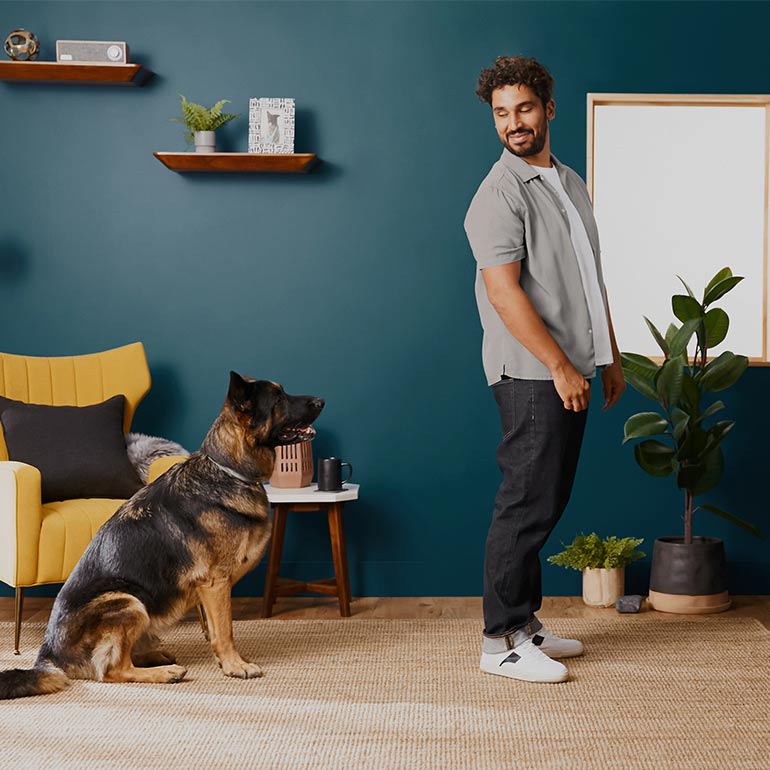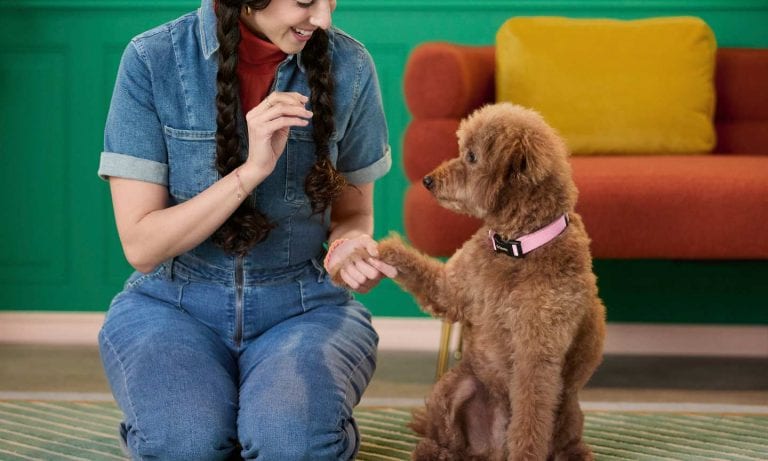Learning how to teach a dog to stay is one of those basic dog training skills that comes in handy for both you and Fido. On your end, it helps you maintain control in all kinds of scenarios. You can use it while playing a game of hide-and-seek, or if you drop a glass in your kitchen and want to protect your pup’s paws while you grab the vacuum.
The stay command also helps curb you dog’s impulse behaviors, which is especially important for puppies. As adorable as they are, puppies aren’t born with the best manners and sometimes their impulses outweigh their sense of safety or concern for those around them.
We spoke with certified dog trainers to explain how to teach a dog to stay so you can both rest easier.
Click the buttons to jump to each section:
Supplies for Teaching a Dog to Stay
✓A quiet space
✓Training treats for dogs, like Zuke's Mini Naturals Chicken Recipe treats
✓15 to 30 minutes per day
✓Patience
✓Enthusiasm
How to Teach a Dog to Stay
Whether you’re eager to learn how to teach a puppy to stay or training an adult dog, the following step-by-step guide works like a charm.
1 Start in a quiet space.
2 Have your dog sit.
3 Reward your dog after they sit a few seconds.
4 Repeat, but increase the delay.
5 Introduce the stay command.
6 Introduce the release command.
7 Make it more challenging.
Things to Avoid
Learning how to teach a dog to stay requires lots of patience from all parties involved. Start with small bursts, reward your dog handsomely, and remain positive. Here’ what not to do:
- Don’t Get Frustrated: If you find yourself losing patience, step back and try again tomorrow. Don’t try to rush the process.
- Don’t Make them Stay for Long Periods: The stay command is meant for relatively short periods of time to keep your dog out of harm’s way. To foster meaningful trust between you and your pup, never use the stay command for extended periods of time. For example, you wouldn’t want to give the dog stay command when you are leaving the house to run errands for a few hours, or if you’re getting ready to take a long shower or bath.
- Avoid Unsafe Situations: Only have your dog sit in safe situations. For example, they shouldn’t be left alone at a dog park or near a busy street.
How to Teach a Dog to Stay FAQs
Q:
Can I teach my dog to stay without treats?
A:
You can technically teach a dog to stay without using treats if there is something else your dog finds highly motivating that is practical to use as rewards—such as a chin or ear scratch. But many dogs are highly food motivated. For that reason, your training efforts may go much further with a tasty treat in hand.
If you’re concerned about giving your pup too many calories, you could try a low-calorie alternative like ice, fresh fruit or unsweetened applesauce. Also note that many training treats are already tiny, so that helps curb the overeating issue. Another option is to use their kibble, which you were going to feed them anyway.
Q:
Can I teach a senior dog to stay?
A:Yes, you can teach a senior dog to stay. While learning how to teach a puppy to stay might seem easier, that’s not always the case. Puppies are easily distracted, which can make teaching them a new trick more, well, tricky!
When teaching a senior dog to stay, you’ll want to keep a few things in mind. For example, if your dog has any hearing or vision issues then accommodate those issues during training. Our experts recommend using a light touch on your dog in addition to a release word to help dogs with sight or hearing issues. Alternatively, you can use a flash of light as a release cue.
While training your senior dog, it might also be beneficial to have them use a comfortable bed for their stay position. This can keep them happy and more focused if they've got arthritis or other health issues.
Q:
Can I use another command word instead of stay?
A:You can use any word you want for the stay cue since your dog doesn't know what the word means before you start training. However, our experts recommend using a short word or phrase and being consistent when using it to avoid confusion. The same goes for your release word.
The Bottom Line
Finding the right motivator is a key part of how to teach a dog to stay. Without the proper incentive, your puppy will choose to stay by your side as opposed to staying put. Also, remember that teaching any of these basic commands takes patience, time and consistency. All that effort will pay off!
Expert input provided by Kim Kurland, a certified professional dog trainer (CPDT-KA) and founder of PAWSitive Hound Dog Training in Tarzana, Calif., as well as Paula Nowak, owner, head trainer and behavior consultant for Canine Country Academy in Georgia.
Like this story? Check out more of our favorite reads:
Share:


